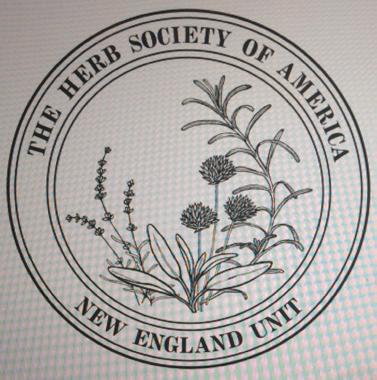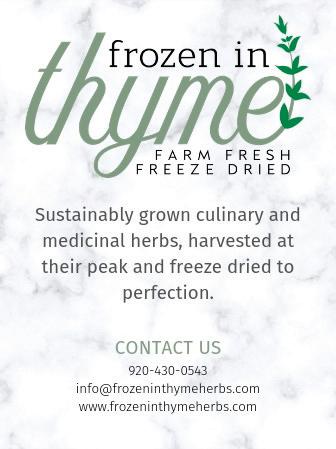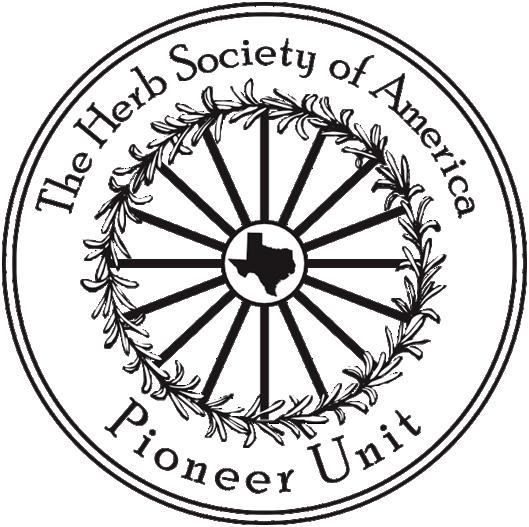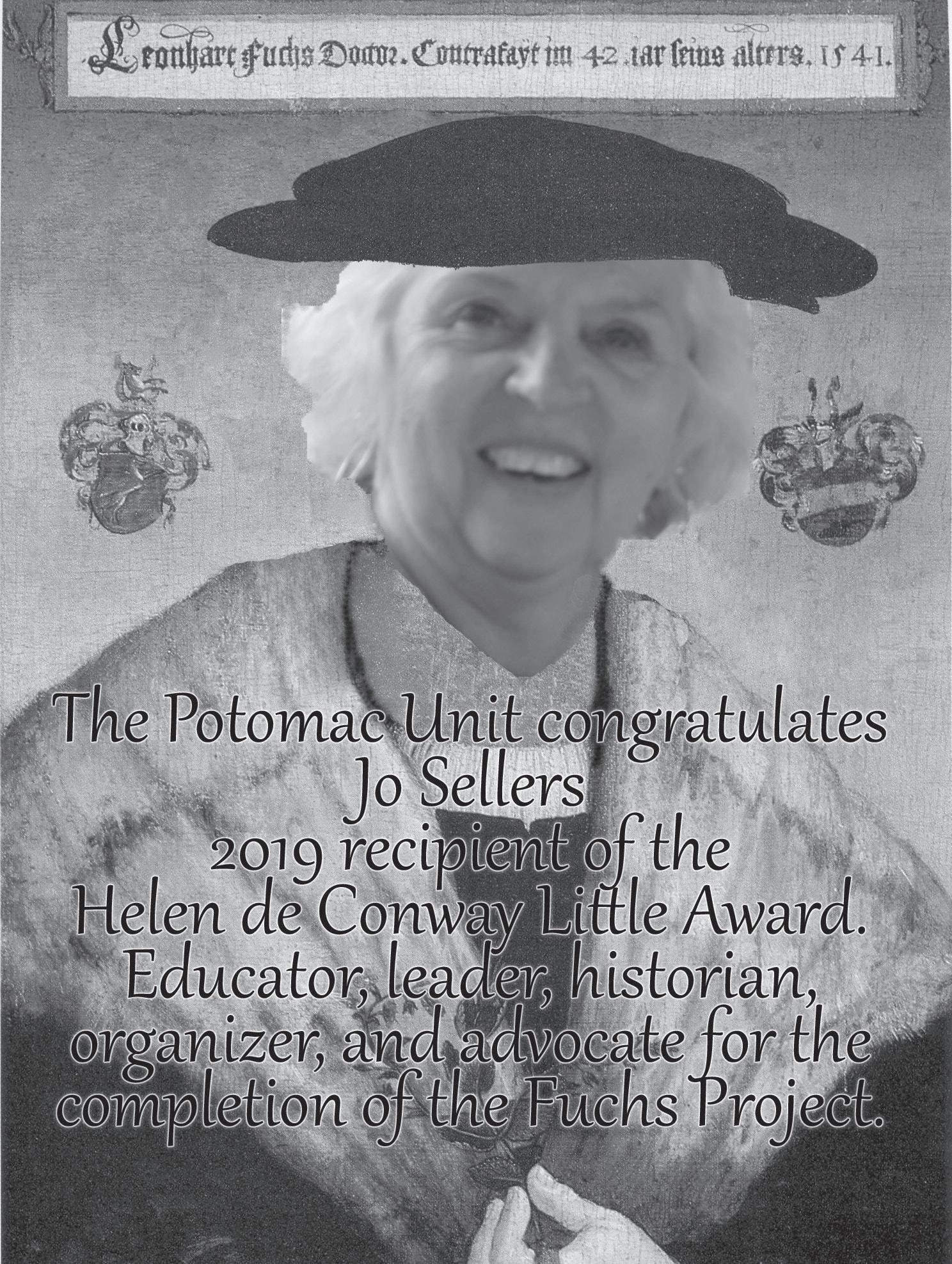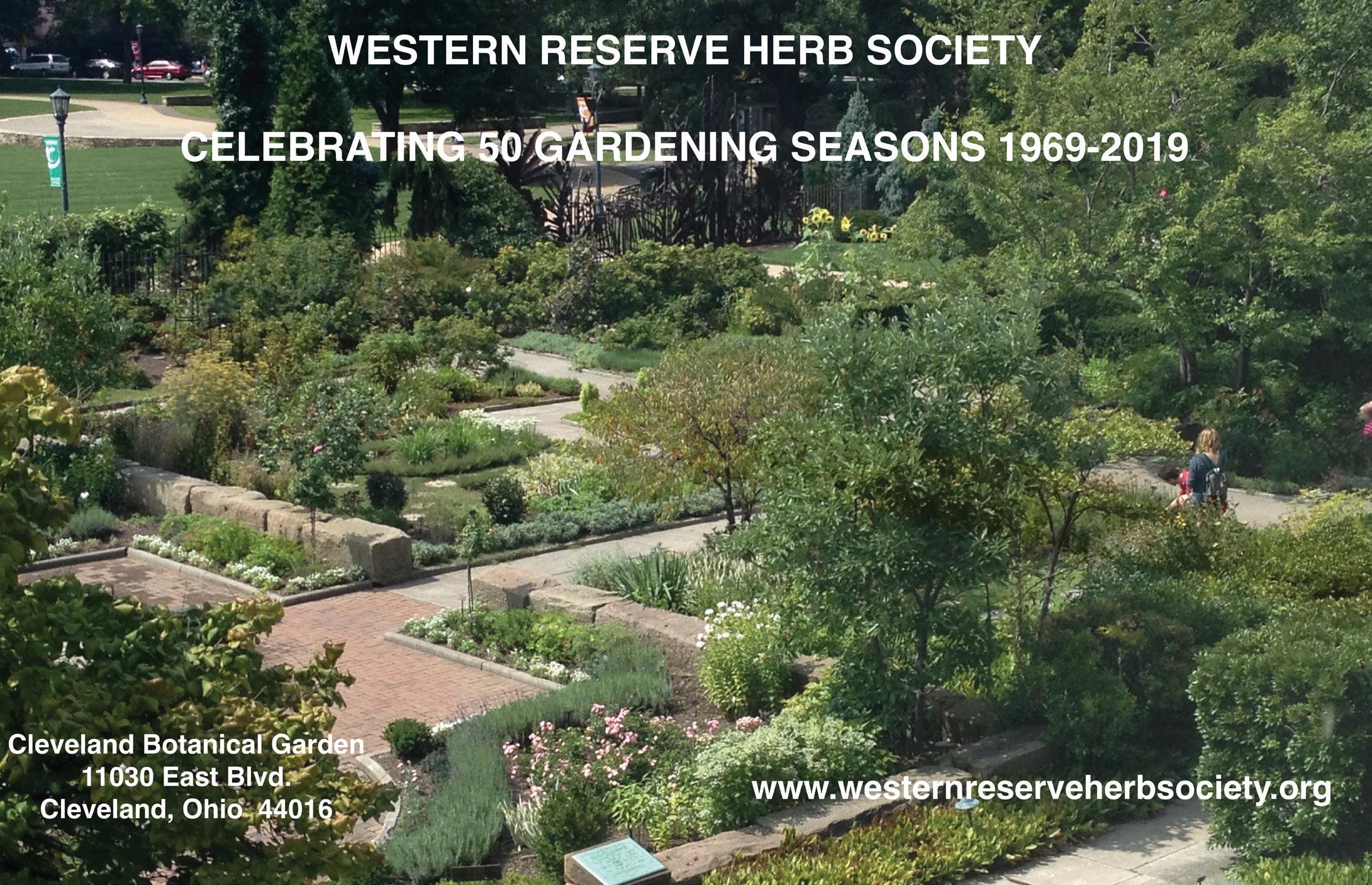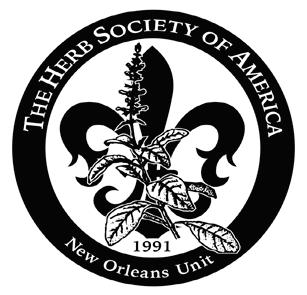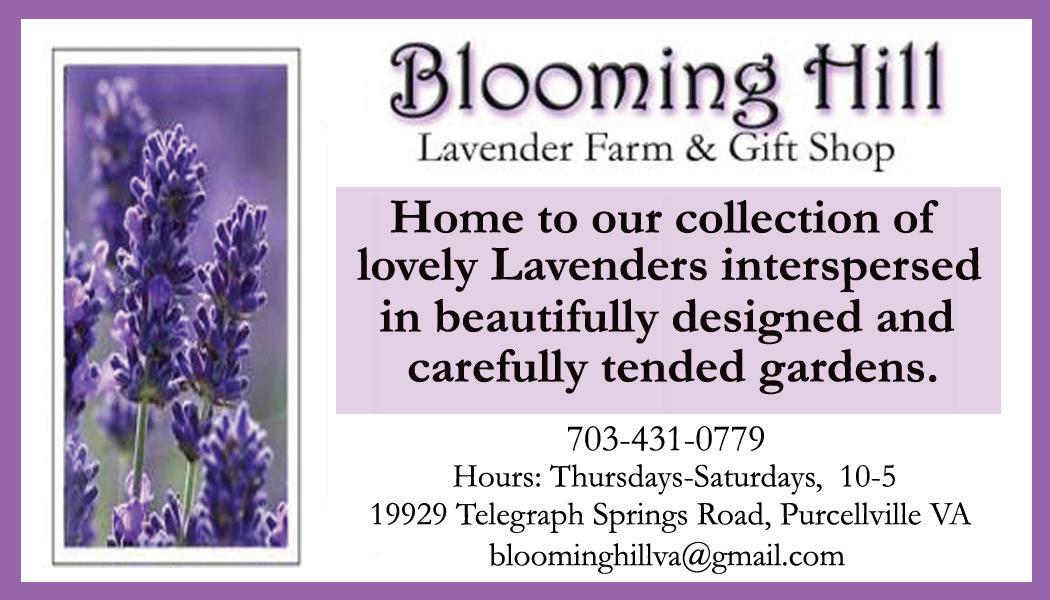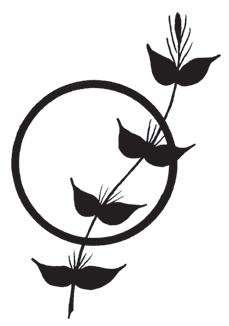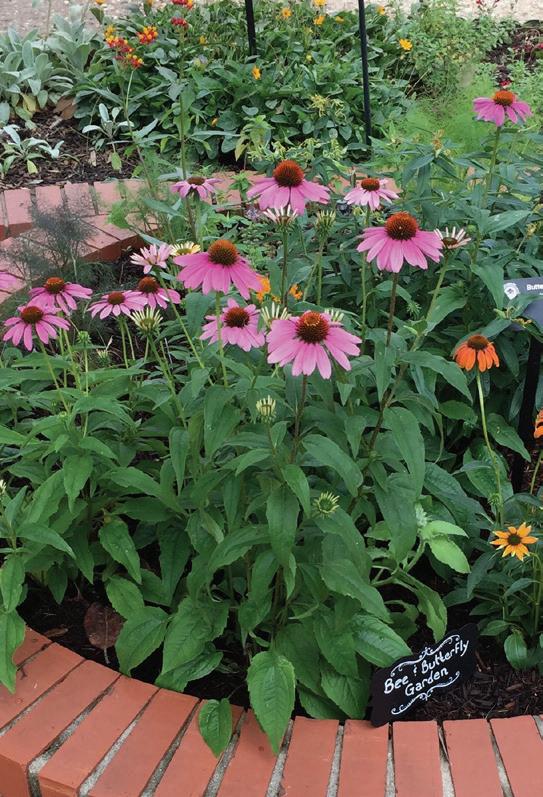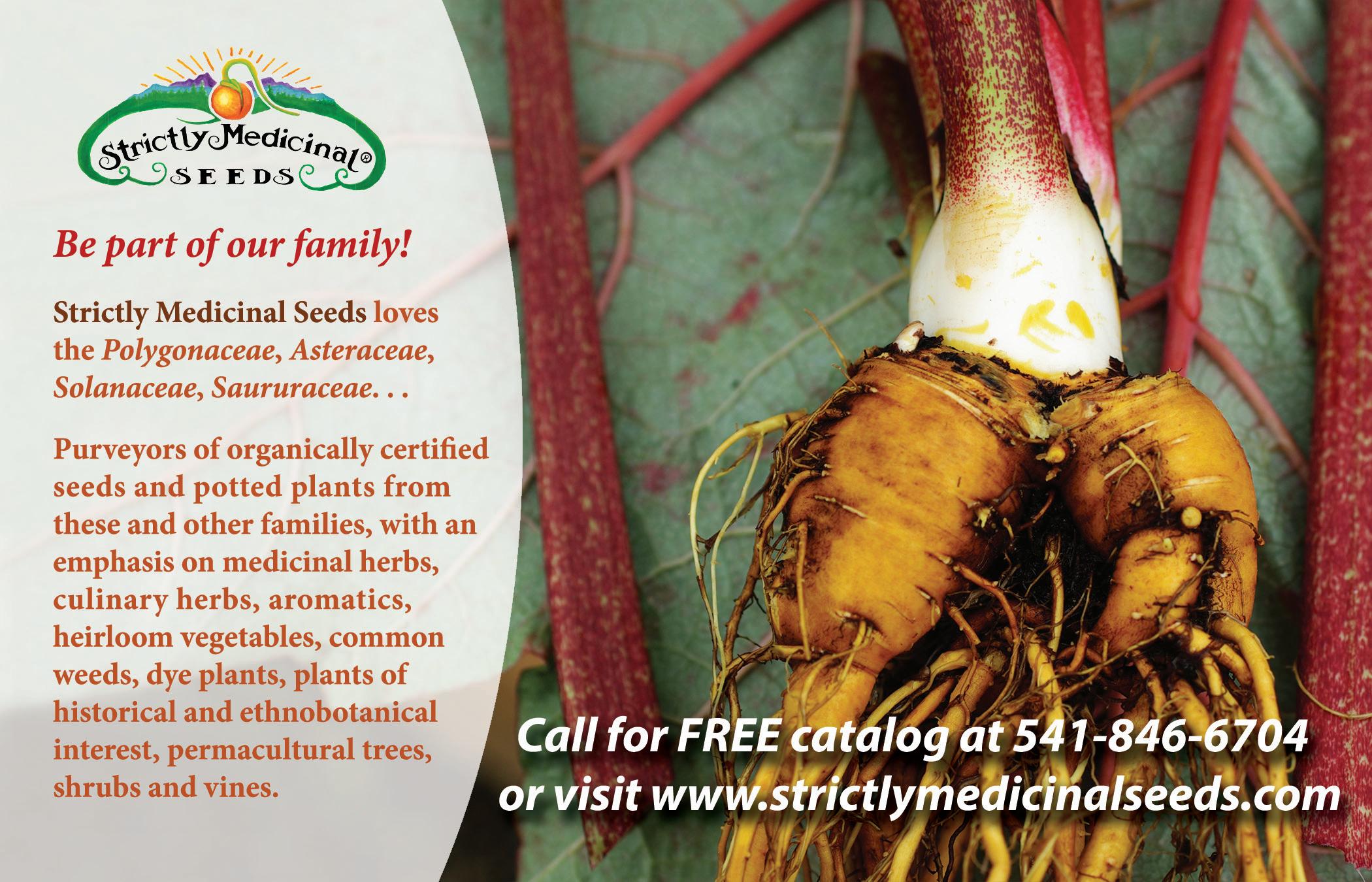
It is the policy of The Herb Society of America not to advise or recommend herbs for medicinal or health use. This information is intended for educational purposes only and should not be considered as a recommendation or an endorsement of any particular medical or health treatment.



Literature Cited
Bown, Deni. 2001. The Herb Society of America new encyclopedia of herbs & their uses. London and New York: Dorling Kindersley Limited.
Carey, Jennifer H. 1995. Urtica dioica. Accessed December 12, 2017. Available from https://www.fs.fed.us/database/feis/plants/forb/urtdio/all.html
Carpenter, Anita. 2005. A nettlesome question. Wisconsin natural resources. Accessed February 1, 2018. Available from dnr.wi.gov/wnrmag/html/stories/2005/jun05/nettle.htm
Davis, B.N.K. 1991. Insects on nettles. Exeter, UK: Pelagic Publishing Ltd.
Emmelin, N. and W. Feldberg. 1947. The mechanism of the sting of the common nettle (Urtica urens). J. Physiol. 106:440-455. Accessed January 31, 2018. Available from https://www.ncbi.nlm.nih.gov/pmc/article/PMC1393807/pdf/jphysiol/01488-066.pdf
Gerard, John. 1597. The herbal, or, general historie of plantes. 1st ed. London: John Norton. Accessed February 4, 2018. Available from https://archive.org/details/ mobot31753000817749
Humphries, David J. and Chris K. Reynolds. 2014. The effect of adding stinging nettle (Urtica dioica) haylage to a total mixed ration on performance and rumen function of lactating dairy cows. Animal Feed Science and Technology. 189: 72-81. Accessed February 2, 2018. Available from https://www.sciencedirect.com/science/article/pii/ S0377840114000327
Illinois Wildflowers. Slender nettle. Accessed February 2, 2018. Available from www.illinoiswildflowers.info/savanna/plants/sl_nettle.htm
New England Wildflower Society. Laportea canadensis. Accessed November 22, 2017. Available from https://gobotany.newenglandwild.org/species/laportea/canadensis/ Porter, Cedric L. 2008. Taxonomy of vascular plants. Caldwell, NJ: The Blackburn Press.
The Plant List. Urticaceae. Accessed March 3, 2018. Available from www.theplantlist.org/1.1/browse/A/Urticaceae
University of Maryland Medical Center. 2017. Stinging Nettle. Accessed August 25, 2017. Available from www.umm.edu/health/medical/altmed/herb/stinging-nettle Weed, Susun S. 2003. Healing wise. Woodstock, NY: Ash Tree Publishing
WikiHow. Identifying stinging nettle. Accessed February 1, 2018. Available from https://www.wikihow.com/Identify-Stinging-Nettle
Bibliography
2017 World Nettle Eating Championship. Accessed November 3, 2017. Available at https://www.youtube.com/watch?v=by0212pJmzg
Adelman, Charlotte and Bernard L. Schwartz. The Midwestern Native Garden: Native Alternatives to Nonnative Flowers and Plants an Illustrated Guide. Athens, OH: Ohio University Press. 2011
Alderleaf Wilderness College. Cordage: Making Natural Rope. Accessed February 1, 2018. Available from https://www.wildernesscollege.com/cordage.html
Bone K. and S. Mill, eds. Principles and Practices of Phytotherapy, Modern Herbal Medicine. London: Churchill Livingstone. 2000. Brenner, Kelly. Nettle. Metropolitan Field Guide (an online blog).
questions in life, such as: “Why are you putting raisins in that?” salt on anything?” “How can you even taste it with that much cinnamon “Why don’t you put some more butter on that?” One surprise when a variety of cooking styles is the varying use of herbs and spices.
I met our dear family friend Mary several years ago I still mother and I ate in her home. We sat down at her kitchen table so simple, yet inviting and warm (very warm; it was summer in in Palestine and Jordan, and on her table sat a few familiar appetizers drizzled over it, a small plate of olives, and warm flat bread. But something else we had never seen before. Mary had placed two a pool of olive oil and the other a pile of an herb blend that we have This delicious mix is called za’atar. Insert image of za’atar رتعز Lamiaceae family In some regions, other 1994), but for our purposes I will be referring to the simplest version, part in Lebanon, Israel, Palestine, Jordan, and Syria. It is often referred This elegantly simple mix balances the mild acidity and saltiness
1



Literature Cited
Angier, Bradford. 1974. Field guide to edible wild plants. Harrisburg, PA: Stackpole Books.
Bahar, Banu and Tomris Altug. 2009. Flavour characterization of sumach (Rhus coriaria L. by means of GC/MS and sensory flavor profile analysis techniques. International Journal of Food Properties. 12:2, 379-387.
Bsisu, May S. 2005. The Arab table. New York: HarperCollins.
Kremezi, Aglaia. 2009. Mediterranean hot and spicy: healthy, fast, and zesty recipes from Southern Italy, Greece, Spain, the Middle East, and North Africa. New York: Broadway Books.
Lukas, Brigitte, Corinna Schmiderer, Chlodwig Franz, and Johannes Novak. 2009. Composition of essential oil compounds from different Syrian populations of Origanum syriacum L. (Lamiaceae). Journal of Agricultural and Food Chemistry. 57 (4), 1362-1365.
Mayo Clinic. Poison ivy rash - symptoms and causes. Accessed April 15, 2018. Available from https://www.mayoclinic.org/diseases-conditions/poison-ivy/symptoms-causes/ syc-20376485
Meyers, Michele (ed.). 2005. Oregano and marjoram: an Herb Society of America guide to the genus Origanum. Kirtland, OH: The Herb Society of America. Accessed January 18, 2018. Available from http://www.herbsociety.org
Missouri Botanical Garden. Origanum syriacum. Missouri Botanical Garden Plant Finder. Accessed April 16, 2018. Available from http://www.missouribotanicalgarden.org/ PlantFinder/PlantFinderDetails.aspx?kempercode=f247
National Plant Germplasm System. Sesamum indicum. Accessed January 18, 2018. Available from https://www.ars-grin.gov/npgs/ Oplinger, E.S., D.H. Putnam, A.R. Kaminski, S.V. Hanson, E.A. Oelke, E.E. Schulte, and J.D. Doll. 1990. Alternative field crops manual: Sesame. Accessed April 16, 2018. Available from https://www.hort.purdue.edu/newcrop/afcm/index.html
Texas A&M AgriLife Research and Extension Center at San Angelo. 2007. Sesame - Production Guide. Accessed April 16, 2018. Available from https://sanangelo.tamu.edu/ extension/agronomy/agronomy-publications/sesame-production-guide/
University of Wisconsin Cooperative Extension Service, the University of Minnesota Extension Service and the Center for Alternative Plant and Animal Products. Alternative field crops manual: sesame. 1990. Accessed April 16, 2018. Available from https://www.hort.purdue.edu/newcrop/afcm/index.html
Wolfert, Paula. 1994. The cooking of the Eastern Mediterranean. New York: Harper Collins.




Literature Cited
Balick, Michael J. 2014. 21st century herbal. New York: Rodale, Inc. FAOSTAT Database. 2019. Cassava production in 2016, Crops/World Regions/Production Quantity from pick lists. Food and Agricultural Organization of the United Nations. Accessed January 3, 2019. Available from: http://www.fao.org/faostat/en/#rankings/countries_by_commodity
Bibliography
Bown, Deni. New Encyclopedia of Herbs and their Uses. London: Dorling-Kindersley, 2001. Caskey, Liz. South American Cooking. Guilford, CT: Globe Pequot Press, 2010. Farah, Fernando. The Food and Cooking of Brazil. London: Anness Publishing, 2014. Kijac, Maria. The South American Table. Boston, MA: The Harvard Common Press, 2003. Mors, Walter R. Useful Plants of Brazil. San Francisco: Holden-Day, Inc., 1966. Schwartz, Leticio M. The Brazilian Kitchen. London: Kyle Books,2010. van Wyk, Ben-Erik. Food Plants of the World. Portland, OR: Timber Press, 2005. Pop Quiz Answers
Guyana, English and French Guiana, French.
Tales of Herbal


Bibliography
Dirr, Michael A. Manual of Woody Landscape Plants: Their Identification, Ornamental Characteristics, Culture, Propagation and Uses. (6th edition.) Champaign, Illinois: Stipes, 2009.
Still, Steven M. Manual of Herbaceous Ornamental Plants, (4th edition). Champaign, Illinois: Stipes, 1994.
Illustration from Manual of Herbaceous Ornamental Plants (4th edition) with permission from Stipes Publishing L.L.C.



Literature Cited
Bhardwaj, H.C. and Kamal K. Jaim. 1982. Indian dyes and dyeing history during the 18th-19th century. Indian Journal of History of Science. 17(1): 70-81. Accessed Sept. 27, 2018
Archived through http://202.41.82.144/rawdataupload/ upload/insa/ INSA_1/200005af6_70.pdf
Encyclopædia Britannica. 1911. Madder. Available from https://en/wikisource. org/w/index.php?title=1911_Encyclopædia_Britannica/ Madder&oldid=6492832 Accessed Sept. 27, 2018
Goodwin, Jill. 1982. A dyer’s manual. London: Pelham Books Limited. Horsfall, R. S. and L. G. Laurie, 1927. The dyeing of textile fibers. London: Ernest Benn Limited.
Open University. 2007. The birth of (synthetic) dyeing. Accessed December 14, 2018. Available at https://www.open.edu/openlearn/history-sciencetecnology-and-medicine/history-science/the-birth-synthetic-dyeing. Pellew, Charles. 1913. Dyes and dyeing. New York: McBride, Nast & Co. The Toxic Free Foundation. 2008. Coal tar dyes. Accessed December 14, 2018. Available at http://thetoxicfreefoundation.com/database/ingredient/ coal-tar-dyes.
Wikipedia. 2018. Alzarin. Accessed September 26, 2018. Available from https://en.wikipedia.org/wiki/Alzarin.
Additional Reading
Martha Stewart Blog. Accessed December 15, 2018. Available at https://www. marthastewart.com/266730/turkey-red-damask.
Sandberg, Gosta. The Red Dyes: Cochineal, Madder, and Murex Purple: A World Tour of Textile Techniques. Asheville, North Carolina: Lark Books, 1996.
Coal tar dyes are artificial coloring agents made by combining various hydrocarbons, which are obtained from the distillation of bituminous coal. These became the synthetic dyes commercially used by the growing textile industry of the 19th century. (The Toxic Free Foundation; Open University)








Literature Cited
Anonymous. 1932. The famous book of herbs. St. Albans, England. Heath & Heather Ltd.
Bais, Mitraja. 2018. Mala: the floral garlands of India. Garland Magazine. Accessed February 5, 2018. Available from https://garlandmag.com/article/ mala-the-floral-garlands-of-India
Bellowing Bantam. 2008.
_____ Guide to aphrodisiacs: Satyrion, stones and pearls. Accessed February 7, 2017. Available from bellowingbantam.blogspot.com/2008/08/guide-toaphrodisiacs-satyrion-stones.html
_____ Guide to aphrodisiacs: onions – an aphrodisiacal gift of the gods. Accessed January 31, 2018. Available from bellowingbantam.blogspot. com/2008/08/guide-to-aphrodisiacs-onions.html
_____ Guide to aphrodisiacs: oysters as aphrodisiacs. Accessed January 31, 2018. Available from bellowingbantam.blogspot.com/2008/08/guide-toaphrodisiacs-oysters-as.html
Connell, C. 1966. Aphrodisiacs in your garden. New York: Taplinger Publishing Co. Corporation for Digital Scholarship. Herbs and drugs used as aphrodisiacs. Accessed January 31, 2018. Available from https://foodanddining.omeka.net/ exhibits/show/aphrodisiacs-and-other-drugs/aphrodisiacs-and-their-uses/ herbs-drugs-aphro
Cunningham, Scott. 1986. The magic of incense, oils and brews. St. Paul, MN: Llewellyn Publications.
_____ 1988. Cunningham’s encyclopedia of magical herbs. St. Paul, MN: Llewellyn Publications.
Dharmananda, S. Ho-Shou-Wu what’s in an herb name? Institute for Traditional Medicine, Portland, Oregon. Accessed January 2013 (confirmed January 31, 2018). Available from http://www.itmonline.org/arts/hoshouwu.htm
Herb Wisdom. 2019. Damiana. Accessed February 18, 2019. Available from http://www.herbwisdom.com/herb-damiana.html
Laws, Bill. 2010. Fifty plants that changed the course of history. Buffalo, NY: Firefly Books (U.S.) Inc.
Leyel, Mrs. C.F. 1948. Elixirs of life. London: Faber and Faber Ltd.
_____ 1986 (original 1938). Herbal delights. New York, NY: Gramercy Publishing Company.
Logue, M.J. 2015. Here’s rosemary, that’s for remembrance … Accessed January 31, 2018. Available from http://englishhistoryauthors.blogspot. com/2015/03/heres-rosemary-thats-for-remembrance.html
Lucas, Richard, 1966. Nature’s medicines – the folklore, romance and value of herbal remedies. West Nyack, NY: Parker Publishing Company.
Manniche, Lise, 1989. An ancient Egyptian herbal. Austin, TX: University of Texas Press (published in co-operation with British Museum Publications).
Mrak, E.M. and G.F. Stewart. 1957. Advances in food research. Vol VII. New York: Academic Press.
Meyer, C. 1986. Herbal aphrodisiacs from world sources. Glenwod, IL: Meyerbooks.
Roybal, B.A. and G. Skowronki. 1999. Sex herbs: nature’s sexual enhancers for both men and women. New York: Grammercy Books.
Stark, Dr. R. 1981. The book of aphrodisiacs. New York: Stein and Day. The Smart Witch. 2018. Magical formulary. Accessed February 2, 2018. Available from http://www.thesmartwitch.com/The_Smart_Witch_ Formulary.html
Bibliography
Boland, B. Gardener’s Magic and Other Old Wives’ Lore. London: Bodley Head, 1977. Frazier, G. and B. Frazier. Aphrodisiac Cookery: Ancient & Modern. San Francisco: Troubador Press, 1970.
Hendrickson, R. Lewd Food: The Complete Guide to Aphrodisiac Edibles. Radnor, PA: Chilton Book Co., 1974.
Leyel, Mrs. C.F. Hearts-Ease; Herbs for the Heart. London: Faber and Faber Ltd., 1949.
A Quick Reference List of Sex Herbs from Allium to Zingiber
Allium spp. – Onions, leeks and garlic all have reputations as aphrodisiacs, or at least as supports to a healthy constitution. The practice of rubbing a mixture of garlic and lard for lasting erections (Meyer, 1986) is a little beyond modern sensibilities, however. Anethum graveolens L. – Dill seeds and leaves have many associations with magic or love potions. To be irresistible, one need simply add dill seeds to bath water (Cunningham, 1988).
Angelica sinensis (Oliv.) Diels – Known as a woman’s ginseng, dong quai has a reputation for relieving numerous female complaints. It balances female hormones, dilates blood vessels, and relieves vaginal dryness and itchiness (Roybal, 1999).
Borago officinalis L. – The ancient Greeks infused their drinks with borage to attain a sense of courage, elation and sexual stimulation (Leyel, 1986). Gerard says it “maketh men and women glad and merry.” A simple recipe is to simmer two lemons with a little sugar, water, and a handful of borage leaves. Cool, and combine with white wine for a refreshing drink.

Crocus sativus L. – The ancient Phoenicians used saffron to flavor love cakes which they dedicated to Astoreth, the goddess of fertility. Cunningham also describes its use in love sachets to increase lustful feelings (Cunningham, 1988).
Elettaria cardamomum L. - This fragrant pod, called cardamom, has been particularly favored in Asian and Middle Eastern culture since ancient times (Laws, 2010). Used in love and lust potions, it is a great addition to coffee, cakes, and cookies.
Foeniculum vulgare Mill. – Like anise, fennel contains estragole and may increase sex drive in women (Roybal, 1999). During the middle ages people used it to guard against evil forces and to satisfy hunger, especially among the poor (Cunningham, 1988).
Pimpinella anisum L. – Anise, with its rich history as not only a flavoring but as a medicinal, imitates the female hormone estrogen and is purported to increase sexual desire, intensity, and satisfaction (Roybal, 1999).
Piper methysticum G. Forst. - Kava is a general use herb, good as a tonic and stimulant. It serves as a muscle relaxant and pain reliever, helping some to enjoy sex more fully. It should only be used in small amounts (Roybal, 1999).
Reynoutria multiflora (Thun.) Moldenke – The story goes that an impotent Chinese man used fo-ti with success, sired many children, and lived to an incredibly old age. Its general stimulant effects are said to increase sexual desire and drive. It can have a laxative effect, so caution is indicated to avoid becoming dependent on its properties (Roybal, 1999).
Rosmarinus officinalis L. - “Hang the flowers on thy bed and place rosemary in the bath to make thee lusty, lively, joyful, liking and young” writes William Langham in The Garden of Health, 1579 (Logue, 2015). Rosemary stands for constancy in love, as it retains its freshness and fragrance longer than any other herb when cut.

Satureja hortensis L. - Summer savory has been known as an aphrodisiac since ancient times and is associated with the satyrs and lusty behavior (Leyel, 1986).
Trigonella foenum-graecum L. - Farmers in Germany, Hungary, and Austria make a drink by decocting fenugreek seeds and flavoring the result with either lemon or mint. Then they used the ground seeds to fatten animals. In Tunis, brides-to-be drank a concoction of boiled milk, honey, and fenugreek seeds to make them a larger size for the marriage market. Because of its ability to lower cholesterol, it may help increase blood circulation and therefore may help with impotence in men (Roybal, 1999).
Zingiber officinale Roscoe – Ginger, when chewed after a kola nut, Cola spp., enhances the aphrodisiac properties of the nut (Meyer, 1986). Ginger raises sperm motility and count (Roybal, 1999).






Bibliography
Damrosch, Barbara. The Garden Primer. New York: Workman Publishing Company, 2003. Edwards, I.E.S. The Cambridge Ancient History, Part 1 Prolegomena and Prehistory. Cambridge: Cambridge University Press, 1970.
Gleason, Henry and Arthur Cronquist. Manual of Vascular Plants of Northeastern United States and Adjacent Canada 2nd Edition. New York: The New York Botanical Garden, 1991.
Haines, Tim with Paul Chambers. The Complete Guide to Prehistoric Life. Richmond Hill, ON: Fire Fly Books Ltd., 2006.
Hine, Robert (ed). A Dictionary of Biology (Oxford Quick Reference). Oxford: Oxford University Press, 2015.
Kaufman, Peter B. Plants: Their Biology and Importance. New York: Harper Collins College division, 1989.
McFee, John. Annals of the Former World. New York: Farrar, Straus and Giroux Publishers, 1983. Medsger, Oliver Perry. Edible Wild Plants. New York: The Macmillan Company, 1939. [CreateSpace Independent Publishing Platform, 2016]
Phillips, Roger and Martyn Rix. The Botanical Garden Vol. 1 Trees and Shrubs. Richmond Hill, ON: Firefly Books Ltd., 2002.
_____ The Botanical Garden Vol.2 Perennials and Annuals. Richmond Hill, ON: Firefly Books Ltd., 2002.
Price, John T. Man Killed by Pheasant and Other Known Kinships. Iowa City, IA: University of Iowa Press, 2012.
_____ The Tallgrass Prairie Reader. Iowa City, IA: University of Iowa Press, 2014. Sunset Northeastern Garden Book Birmingham, AL: Oxmoor House, Incorporated, 2001.
The Herb Society of America Ceanothus L. Ceanothus species. 2018. Accessed February 19, 2019.Available from: https://herbsocietyorg.presencehost.net/explore/hsa-conservation/ hsa-notable-native-herbs.html
_____ Equisetum L. Equisetum species. 2018. Accessed February 19, 2019.Available from: https://herbsocietyorg.presencehost.net/explore/hsa-conservation/hsa-notable-nativeherbs.html
Thompson, Kenneth. The Book of Weeds: How to Deal with Plants that Behave Badly. London: Dorling Kindersley, 2009.
Watts, May Thielgaard. Reading the Landscape of America. New York: Collier Books, 1975. 1975














Literature Cited
Calabrese, Angelica. 2016. The history and uses of the magical mandrake, according to modern witches. Atlas Obscura. Accessed April 19, 2019. Available from https://www. atlasobscura.com/articles/the-history-and-uses-of-the-magical-mandrake-accordingto-modern-witches
Carter, Anthony J. 1999. Dwale: an anesthetic from Old England. British Medical Journal. 319: 63-162.
Cunningham, Scott. 1988. Cunningham’s encyclopedia of magical herbs. St. Paul MN: Llewellyn Publications.
_____ 1998. Magical herbalism – the secret craft of the wise. St. Paul MN: Llewellyn Publications.
Folkard, Richard. 1884. Plant lore, legends and lyrics. London: R. Folkard and Son. Accessed December 3, 2018. Available from www.gutenburg.org/ebooks/44638 Grieve, Maude. 1931. A modern herbal. New York: Harcourt, Brace and Company. Hansen, Harold A. 1978. The witch’s garden. Santa Cruz CA: Unity Press. Kroll, David. 2017. The origin of witches riding broomsticks: drugs from nature, plus Shakespeare. Forbes. Accessed April 19, 2019. Available from https://www.forbes.com/ sites/daidkroll/2017/10/31/the-origin-of-witches-riding-broomsticks-drugs-fromnature-plus-shakespeare/#3fc57baa61a9
Lewis, Walter H. and Memory P.F. Elvin-Lewis. 2003. Medical botany. Hoboken, NJ: John Wiley and Sons.
Liberman, Anatoly. 2009. An analytic dictionary of English. Minneapolis: University of Minnesota Press. Accessed March 26, 2019. Available from https://books.google.com/ books?id=_m7k1Oi-cakC&pg=PA108&lpg=PA109&dq=henbane+An+Analytic+Dicti onary+of+English#v=onepage&q=henbane
Mann, John. 1992. Murder magic and medicine. Oxford: Oxford University Press. Manniche, Lise. 1989. An ancient Egyptian herbal. Austin TX: University of Texas Press. McCulloch, Sam. 2018. Twilight sleep – the brutal way some women gave birth in the 1900s. Accessed March 26, 2019. Available from https://www.bellybelly.com.au/birth/ twilight-sleep

Meier, Allison. 2016. The first known depiction of a witch on a broomstick. Hyperallergic. Accessed April 19, 2019. Available from https://hyperallergic.com/332222/first-knowndepiction-witch-broomstick/
Moran, Robin C. 1995. In search of the fern seed (Part 1 of 3). Fiddlehead Forum. 22:37-40. Accessed October 24, 2018. Available from https://www.ou.edu/cas/botany-micro/ben/ ben120.html
Parkinson, J. 1640. Theatrum botanicum: the theater of plants: or, An herball of a large extent .... London: Printed by Tho. Cotes. Download of full text available from https:// catalog.hathitrust.org/Record/102454428
Rose, Stephanie. Fascinating herbal histories from around the world. Accessed March 26, 2019. Available from https://garden-therapy.ca.herbal/histories/
Roth, Harold 2017. The witching herbs, 13 essential plants and herbs for your magical garden. Newburyport, MA: Red Wheel/Weiser Books.
Schultes, Richard Evans, Albert Hoffmann, and Christine Ratsch. 1998. Plants of the gods. Rochester, VT: Healing Arts Press. Available from https://www.scribd.com/ document/339397962/Schultes-Hofmann-Plants-of-the-Gods-Healing-Arts-2001-pdf Smythe, Lynne. 2003. Halloween’s herbal legends. Herb Quarterly. Fall. WebMd. 2018. Hyoscyamine Tablet. Accessed March 26, 2019. Available from https:// www.webmd.com/drugs/2/drug-13766/hyoscyamine-oral/details
Bibliography
Boland, Bridget. Gardeners Magic and Other Old Wives’ Lore. Farrar Straus Giroux, 1977 Dunwich, Gerina. Wicca garden. New York: Citadel Press, 1996.
Johnson, Cody. Magic Medicine: A Trip Through the Intoxicating History and Modern-day Use of Psychedelic Plants and Substances. Beverly, MA: Fair Winds Press, 2018.
Thiselton-Dyer, T.F. The Mythic & Magickal Folklore of Plants, New York: Samhain Song Press, 2008. (through lulu.com).
Thompson, Helen. “How Witches’ Brews Helped Bring Modern Drugs to Market.” Smithsonian Magazine. October 31, 2014.



hr at 35°C in an oven. In Yr. 2, all stigmas were dried at room temperature for ~48 hr. The dehydrated stigmas were weighed to determine yield and held in clear Petri dishes sealed with Parafilm® (Fig. 2). Quality Assessment. Saffron contains over 150 volatile compounds, but the contents of three chemical components are commonly used to evaluate saffron quality: crocin which imparts the typical orange-yellow color and aroma; safranal, which gives saffron its characteristic odor; and picrocrocin, which confers the distinct flavor. We conducted a review of the various ways to test saffron quality and anticipated using the standard ISO standard method with spectrometry. We discussed the options with Dr. Charles Cantrell, Natural Products Utilization Research Lab, Univ. of Mississippi, Univ., MS, who has extensive experience with saffron quality assessment. He advised us to use high-performance liquid chromatography (HPLC), not spectrometry. HPLC analyzes the concentration of the actual saffron constituents, while spectrometry uses color The correlation between color and he chemical analysis of saffron is uncertain. He offered to complete the analyses of our samples for this project. Because of challenges with regard o he stability of the commercially available picrocrocin standards, he recommended we focus on analysis of safranal and crocins in Year 1 In that year we compared saffron quality based on these two compounds for the two dehydration methods, on the harvest date (early vs late season) and location. In Year 2, analyses of safranal, crocins and picrocrocin were conducted. Because of challenges with saffron analysis and the instability of its compounds, it was not possible o obtain absolute concentrations of the three key compounds. However, a relative value was obtained, which allows comparisons among the treatments and regions of production. The specific samples tested each year, and various growing and drying parameters are described in Tables 1 and 2.
Table
Fig. 2 Fresh saffron stigmas, stamens and petals before weighing.
Table 2. Saffron samples analyzed in Yr. 2 (2016) from different regions, harvest times and drying regimes
Sample code Saffron source Growing method Corm source & Harvest year Planting year Drying regime
VT7 Vermont1 In-crate/High tunnel PA 2015 Room temp.
VT8 Vermont2 In-crate/High tunnel 1st year Holland 2016 Room temp.
VT9 Vermont2 In-ground/High tunnel 1st year Holland 2016 Room temp.
VT10 Vermont3 In-crate/High tunnel 1st year PA 2016 Room temp.
VT11 Vermont4 In-crate/High tunnel 2nd year PA 2015 Room temp.
VT12 Vermont2 In-ground/High tunnel 1st year PA 2016 Room temp.
VT13 Vermont4 In-ground/High tunnel 2nd year PA 2015 Room temp.
ME1 Maine In-ground/Field Holland 2016 Mixed
PA2 Pennsylvania6 In-ground/Field Pennsylvania Unknown Unknown
MA1 Massachusetts7 In-ground/Field Unknown Unknown Unknown
IR2 Iran8 In-ground/Field Unknown Unknown Unknown
LB1 Lebanon9 In-ground/Field Unknown Unknown Unknown
LB2 Lebanon10 Unknown Unknown Unknown
SP2 Spain11
1 Sample from VT harvested in 2015 held 1 year before analysis
2 Corms from Holland planted in Sept 2016.
3 Corms from Pennsylvania planted in Sept 2016.
4 Corms from Pennsylvania, planted in Aug. 2015
5 Sample from Maine grower, corms planted in Aug. 2016.
6 Sample from Pennsylvania grower.
Sample from Massachusetts grower. Sample from Iran, purchased on line (2016 product)
Sample from field trials of Amer Univ of Beirut, Lebanon.
10 From market in Beirut, Lebanon.
1 From market in Spain
assigned a ratio of 1, and others were ranked in relationship to that value . AnalDuncan multiple range test were carried out to assess significant differsamples in Year 2, using SPSS V.24. Statistical analysis of the samples in saffron quantities were too small to allow for replication .
Chemical analysis Dry saffron samples were sent to the USDA-ARS Natural Products Utilization Research Unit to assess quality with HPLC. Results were compared with commercial standards: safranal 88%, crocins and picrocrocin. Saffron stigmas were placed in a glass dish and cut with a razor blade to produce a uniform powder. The ground plant material was removed with a spatula or paintbrush into pre-weighed 20-mL scintillation vials. Around 50-60 mg of each saffron sample was weighed in a 25-mL volumetric flask for extraction. Each sample was extracted with 8-mL of degassed methanol to eliminate oxygen and sonicated for 1 hr. The entire process was carried out in the dark at room temperature. After sonication, volumetric flasks were placed in the dark overnight. Samples were removed sonicated for 1 hr, and brought to volume with previously degassed methanol. Each extracted sample was filtered using a 1-mL Tuberculin syringe with tip into an HPLC vial for analysis. Each 25-μL sample was immediately injected into an HPLC co diode array detector to determine the content of each compound relative to the standard The was an Agilent 1260 series consisting of a degasser, quaternary pump, ALS auto-sampler and diode array dete tor. An Agilent Zorbax SB-C-18, 4.6 x 250 mm, 5μm column was used for this analysis with a column flow of 1 mL/min. In 2015 samples were analysed for crocins and safranal whereas in 2016 analyses for crocin nal and picrocrocin were completed Sample injections were made at 25 μL for all samples and standards. Using a solvent system of H2O and ACN, a gradient elution was used for analysis. The analyses were triplicated for each sample. Safranal was detected at 320 nm, all crocins (a mixture of 5 crocins) were detected at 440 nm, and picrocrocin was detected at 250 nm.
dry their saffron. It is reported that the drying method significantly affects the content of the key compounds for which we tested. Saffron has been produced in the US by the Pennsylvania Dutch since the late 1600s. They produce saffron in open fields without protection and use simple dehydration methods, “cooking the saffron in copper pans at a high temperature for a few minutes” Three of the samples (from Maine, Massachusetts and Pennsylvania) we tested were grown and processed in this way and were among those with high quality Research is needed to determine the best dehydration method for maximizing on safranal concentration, though beyond the scope of this project.
dry their saffron. It is reported that the drying method significantly affect which we tested. Saffron has been produced in the US by the Pennsylvania produce saffron in open fields without protection and use simple dehydration copper pans at a high temperature for a few minutes” Three of the samples Pennsylvania) we tested were grown and processed in this way and were among those with high quality Research is needed to determine the best dehydration method for maximizing on safranal concentration, though beyond the scope of this project.
content of crocins (linked with saffron color and aroma) for the Vermont was not significantly different among samples regardless of how they were how they were dried (room temperature or room temperature and in the ovharvested (early season or late season) (Fig. 3). The content of crocins in the Verer than for saffron from other locations, including those from traditional safoverseas (Iran, content of safranal considerably less than the among the six for safranal 0.21 and were from Spain different from those Interestingly, the both the were very si mVermont samgreatest for Pennsylvania the crocins or method of collected in lowest crocins saffron sample the other sama market in expect that this low crocin level samples. one Vermont sample in 2016 the one that had been stored since 2015. It is significant difference between results in Year 1 and 2 Safranal was detected samples from Iran, Maine and Pennsylvania. No safranal was detected from Lebanese market, further suggesting the sample was tainted with non-saffron
Saffron is sometimes adulterated, resulting in products of questionable quality, as we observed for the sample purchased from a market in Lebanon While it looked like pure saffron to the untrained eye and was labeled as such, analysis clearly showed that it contained very little saffron. Most of the sample was probably safflower, (Carthamus tinctorius), which is often used to adulterate saffron (Fig. 5) Developing low cost test methods to assess saffron is an important component of strengthening the US saffron industry. The quality of a saffron product is critical for developing a local or global market for this high value specialty crop. The quality of saffron produced in Vermont in high tunnels and in the field in other New England states suggests that there is potential to add this high value crop to the Northeast agroecosystems.
Quantitative Analysis. With five concentration points, an external standard least squares regression for quantification was used. The three analytes: safranal, crocins (all 5), and picrocrocin were used to formulate separate calibration curves. The response factors were calculated using the equation RF=DR/C where DR is the detector response in peak area (PA) and C is the analyte concentration. The chromatograms of each saffron sample were compared to the standards. The target peaks were confirmed by retention time and UV spectral data. Confirmed integrated peaks were then used to determine the analyte percentage. The R.F. of the target analyte was used to determine the “percent in dry weight” for each sample using the equation: The R² for the three standard curves for safranal, 1 0.005 mg/mL for picrocrocin. The limit of quantification for all comp the samples with the highest concentra




Saffron is sometimes adulterated, resulting in products of questionable quality, as we observed for the sample purchased from a market in Lebanon While it looked like pure saffron to the untrained eye and was labeled as such, analysis clearly showed that it contained very little saffron. Most of the sample was probably safflower, (Carthamus tinctorius), which is often used to adulterate saffron (Fig. 5) Developing low cost test methods to assess saffron is an important component of strengthening the US saffron industry. The quality of a saffron product is critical for developing a local or global market for this high value specialty crop. The quality of saffron produced in Vermont in high tunnels and in the field in other New England states suggests that there is potential to add this high value crop to the Northeast agroecosystems.










Bibliography
Anderson, Gregory J. and Hill, James D. Many to Flower, Few to Fruit: The Reproductive Biology of Hamamelis virginiana, American Journal of Botany 89(1): 67–78. 2002
Dirr, Michael. Manual of Woody Landscape Plants. Stipes Publishing, Champaign, IL. 1975, revised 2009. Fire Effects Information System, USDA. Species: Hamamelis virginiana. Online: https://www.fs.fed.us/ database/feis/plants/tree/hamvir/all.html. Accessed January 28, 2019.
Mione, Thomas and Bogle, A. Linn. Comparative Ontogeny of the Inflorescence and Flower of Hamamelis virginiana and Loropetalum chinense (Hamamelidaceae), American Journal of Botany, 77(1): 77-91. 1990. Accessed online by subscription from JSTOR, February 2, 2019.
USDA Plants Database. Hamamelis www.plants.usda.gov
Wang, Hongshan, Blanchard, Jane, Dilcher, David L. Fruits, seeds, and flowers from the Warman clay pit (middle Eocene Claiborne Group), western Tennessee, USA, Palaeontologia Electronica Vol. 16, Issue 3; 31A; 73p; Online: https://doi.org/10.26879/

















Kim Lab ash LoudounValleyHerbs @yahoo.c om

Loudou n Valley Herbs
S p e c i a l i z i n g i n L a v e n d e r a n d R o s e p r o d u c t s
19405 W oodtrail Rd. , Round Hil l, VA 20141 540-554-2748

NOW AVAILABLE!

7815 Highway 212 E, Chaska, MN 55318 herbs@shadyacres.com
Beyond Rosemary, Basil, and Thyme
UNUSUAL, INTERESTING, AND UNCOMMON HERBS TO ENJOY
Theresa Mieseler $24.95

Available through www.shadyacres.com and Amazon Discover plants new to you, how to grow them, interesting ways to use them, and unusual facts about these fascinating herbs. Based on Theresa’s 45 years of experience growing and selling herbs, this 230-page book is filled with lush color photographs, recipes, and stories for incorporating these herbs into your daily life.






Happy 20th Anniversary to

Mid-Atlantic Conference Williamsburg
September 25-26, 2020



Visit us in Reading Pennsylvania

Monthly meetings: September - April, including speakers and herbal studies.
Public Events: Garden Bus Tour in June; Symposium Luncheon in October.
Visit our website for program and event information
www.paheartlandhsa.org
Visit our herb gardens
Penn State University, Janssen Conference Center, Reading PA
White Horse Tavern & Mouns Jones House, Morlatton Village, Douglassville PA
Daniel Boone Homestead, Birdsboro PA





